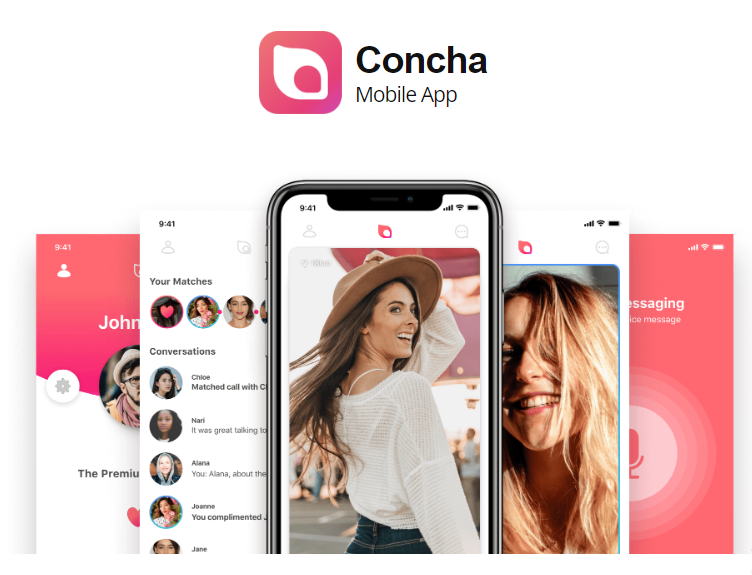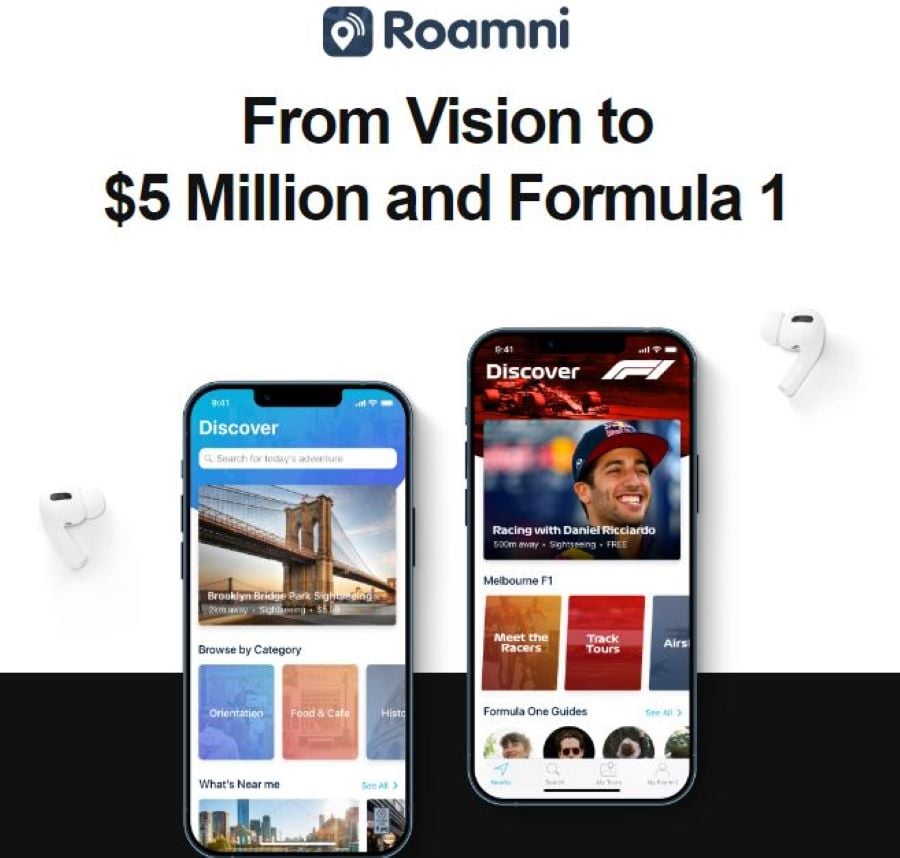How to Make a Dating App That Wins Users’ Hearts

The world is falling in love with dating apps.
What started as a small niche has exploded in recent years and shows no sign of slowing down anytime soon.
According to Statista, online dating apps are projected to have up to 441 million active users globally — which translates to $8.7 billion in revenue — by the end of 2023.

Source: Statista
If you’re thinking about building your own dating app, now is the ideal time to take the leap.
In this article, I’ve outlined a step-by-step guide to help you build a successful dating app. But before we get into that, let’s first survey the field and see your biggest rivals.
The most popular dating apps
Here are the five most downloaded apps in 2022:
- Tinder – 64 million downloads
- Bumble – 28 million downloads
- Badoo – 26 million downloads
- TanTan – 24 million downloads
- Grindr – 13.6 million downloads
If you’re a dating app startup, you’re probably thinking: how can I make a mark in a crowded online dating market dominated by a big app like Tinder?
Real talk. It’s going to take more than just a simple swipe.
Building your own dating app is like dating — it’s exciting and daunting at the same time. If done poorly, it can break both your heart and your pocket.
But with careful planning and the right approach, you can create a dating app that users would love to use.
That said, let’s start discussing how.
How to Make a Dating App Users Would Fall in Love With
1. Identify your target audience
Blind dating can be fun. But in mobile app development, the way to a user’s heart is through research.
You must know your target audience well. Who are you trying to reach? Are you going after a wider audience or targeting a niche segment? What are your users’ age range, gender, preferences, interests, etc.?
Knowing these details can help you craft a more targeted web or mobile dating app that appeals to your market.
2. Find a niche that can sweep your users off their feet
What do you have that others don’t?
To answer this question, you must know two crucial things: what’s out there and what’s not.
What do other similar apps offer? What features do they provide? What problems or needs do these apps solve or fulfill?
Then, if you’re gunning for the same market as your competitors, figure out how to make yours better, more interesting, or more useful to the users. In other words, you need to find a gap in the market.
Talk to people using the app within and outside your circle and ask about their experience. What features do they love, and what do they hate? What problems do they currently experience or wish the existing apps could do?
Do also what most difference makers do: see for yourself. According to David Sturt, author of “Great Work,” looking with your own eyes from various perspectives allows you to see new possibilities — a tip our developers also suggest you consider for your app.
“Do your research and try out your competitors’ apps. Then, add unique or interesting features to increase your product’s competitive value.”
— Rolly Rulete, Android Developer, Appetiser Apps
I bet you can also learn a thing or two from Concha, one of our successful dating app development partners.

The world-first swipe, match, talk dating service shows that some markets are ripe for change, no matter how big the competition.
Instead of going head-to-head with the giants of the dating app market, Concha opted to go heart-to-heart with its target audience.
It distinguishes itself from other dating apps by offering a safer, more honest, and foolproof way to date online.
With its talk-before-you-text feature, Concha plans to bring dating back to its essence — open communication.
How do we know it works?
Concha acquired more than 1,000 users in the first week of launch!
The Concha case study sheds more light (candlelight or otherwise) on this new player in the dating app scene.
3. Outline your online dating app’s MVP functions and features
Ever heard of speed dating?
It’s an in-person matchmaking process that shares similar dynamics with dating apps.
But instead of simply swiping left or right, people spend actual first dates with all participants for about 4-5 minutes. This allows them to choose the date with the most potential to move further without wasting time.
A minimum viable product (MVP) is somehow the same.
An MVP is the earliest and leanest version of your app. It has enough core features to function successfully and determine product-market fit and viability. It enables you to launch your app faster and better grasp how people interact with it — without spending too much time, money, and effort creating additional features.
In our experience, apps with simpler interfaces tend to drive better engagement and retention. So, avoid love-bombing your audience with complex, unnecessary features.
But how do you decide which features to keep and eliminate for your dating app MVP?
What are the most important features of a dating app?
According to our developers, the most important question you must ask yourself is how users will find potential matches — after all, it’s the primary reason people use dating apps. This involves identifying the matching algorithm your app will use for matchmaking suggestions.
Among the most popular algorithms used in modern dating apps are:
- Compatibility-based algorithms. This algorithm leverages the users’ profile information to identify individual needs and wants in a potential mate. It often relies on predefined categories like geolocation, mutual interests, and demographics.
- Personality-based algorithms. This matching system focuses on how two people respond to similar situations or how compatible their personalities are.
- Bayesian matching. This algorithm suggests potential matches based on how users have responded in the past.
- Collaborative filtering. This system allows other users within the community to offer matches based on their similar interests or background.
Aside from the matching system, you must also identify the key features that will make your app functional and engaging. Almost all successful dating apps have the following essential elements:
- An engaging and user-friendly interface
- Secure registration, login options, and overall data protection
- An in-app messaging or similar feature that allows users to interact with one another
- An option to filter matches based on preferences and interests
- A match notification feature
- An option to upload photos
- A system for filtering potential matches, such as swiping gestures
Depending on your app’s niche, your MVP may also include features often considered additional features for other apps. This may come in any form, such as video calling, a gamification feature that will make the app user experience more exciting, or an identity verification feature that will make users feel safer.
Again, it all depends on your app’s core or purpose. To identify whether a feature is an MVP must-have, ask yourself, “Will my app still accomplish its purpose without this functionality?”
And if you need an expert’s guidance on this matter, hit us up for a free consultation.
4. Design your dating app
Virtual or otherwise, dating is experiential. This is why, at Appetiser, we focus first on app design — ensuring that it offers the experience your potential users expect.
A good UX is crucial to the success of a dating app because it directly impacts how users interact with and perceive the app. A dating app’s user experience is similar to a first date in several ways. Here are a few reasons why:
❤️ Attraction. Dating apps are often visually driven, and users will be attracted to an app with an appealing and well-designed user interface. An attractive design can help your app stand out among competitors and encourage users to engage with it.
❤️ Usability. A well-designed dating app will be easy to navigate and use, providing a positive user experience. If users find your app difficult or confusing, they are less likely to continue using it or recommend it to others.
❤️Engagement. A good design can increase user engagement by making the app enjoyable and easy to use. This can lead to increased usage and user retention over time.
To ensure an attractive, functional, and engaging app UX, our design stage involves two main phases: sketching and wireframing.
Sketching
We start by sketching out rough ideas for the layout and features of your app. This helps you to quickly iterate on different design ideas and identify potential problems or gaps in your concept. We sketch out different screens and user flows and consider how users will interact with your app.
Wireframing
Once you have a clearer idea of your app’s design, we move on to wireframing. Wireframes are more detailed visual representations of your app’s screens and user flows, which can be created using design software such as Figma. Wireframes help refine your app’s layout and functionality and can be used to gather feedback from potential users and stakeholders.
By the end of the design stage, you should have a world-class interactive prototype that you can use to validate your ideas and even gain funding for the next steps of your app development.
We’ve seen this happen for many clients, including Roamni, the world’s first tourtech provider.

In six short weeks, we’ve designed a world-class, interactive prototype that helped Roamni showcase its app’s unique features and value, test the waters, and gain investor support.
In Roamni’s eventful app development journey, we’ve helped the startup turn from zero to a multimillion-dollar brand now powering global hotshots like Formula 1 and the Australian Grand Prix.

With our team comprising the top 1% of global talent and our innovative proprietary design framework, we’re confident we can make the same happen for your dating app.
5. Develop your online dating app
It’s time to take things to the next level and develop your app! This is where dating app developers apply the necessary tech stack, including coding and programming languages, to the app architecture.
The development timelines and costs may vary depending on the type of platform (progressive web app, iOS, or Android) you’re building for, as well as the complexity of your app’s features. Ultimately, you need to carefully consider many factors when estimating app development costs.
To keep our clients in control of their projects’ direction and budget, we adopted the Kanban development methodology in managing our workflows. This approach allows us to deliver value incrementally and ensure that your app is developed efficiently and effectively.
Here’s what it looks like for mobile dating app development:
- First, we create a roadmap indicating all the features and functionalities that your MVP dating app should have. We prioritize the most important items at the top of the backlog.
- Then, we set up a Kanban board with columns for different stages of the development process: “To Do,” “In Progress,” and “Done.”
- Afterward, we take the items from the product backlog and break them into smaller, actionable tasks. We then add these tasks to the appropriate columns on the Kanban board.
- To prevent your dating app development team from becoming overwhelmed and to maintain focus, we limit the number of tasks that can be in progress at any given time. This will help ensure that everyone can stay focused and work effectively.
- As the development process progresses, the backlog will likely change. We refine the backlog continuously based on feedback from you, your users, our team members including quality assurance specialists, and other stakeholders.
I encourage you to read our article on the app development process for a more comprehensive view of how we design and build our apps.
6. Market, launch, and iterate
Even before letting your app hit the app stores, conduct pre-launch marketing campaigns. You may build a landing page or a website to encourage as many users as possible to sign up for your dating app.
Remember, people use dating apps to meet other people. It can only fulfill this purpose if a sufficient number of users already use a dating app, even from the early stages of app development — reiterating the importance of a minimum viable product.
Pre-launch marketing can help create buzz, generate interest, and build anticipation for your app before it even launches. This can help you reach a wider audience and get more people excited about your app, which can translate into more downloads and sign-ups once it’s available.
And once you’re ready to put your app out there, make sure to communicate its “AHA moment” by optimizing its app store page, implementing best SEO practices, promoting on social media, and applying other powerful app marketing strategies.
After launch, keep track of key app statistics, such as active users acquired and average usage session length, to identify areas for improvement.
Lastly, don’t forget to release timely and relevant updates to fix bugs and enhance the user experience. That’s how you keep the fire burning!
Make a Move
Developing a successful dating app takes time, effort, and patience. But the rewards are worth it, especially when your users find love (or at least some good dates) using your app!
So, keep the above steps in mind — then just build it!
And if you need the perfect wingmate to journey with you from beginning to end, reach out to us at Appetiser! We promise to bring our A-game throughout.



